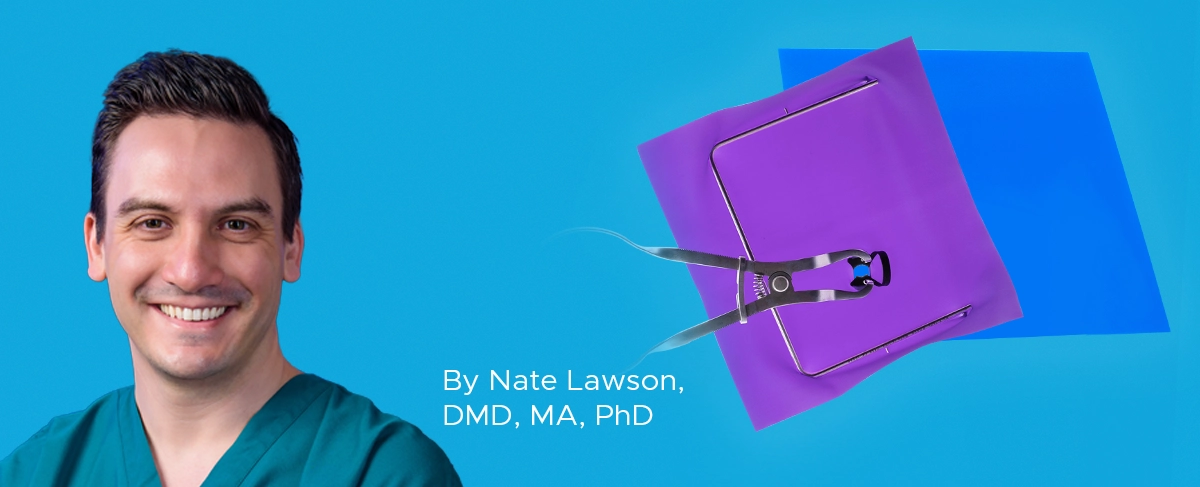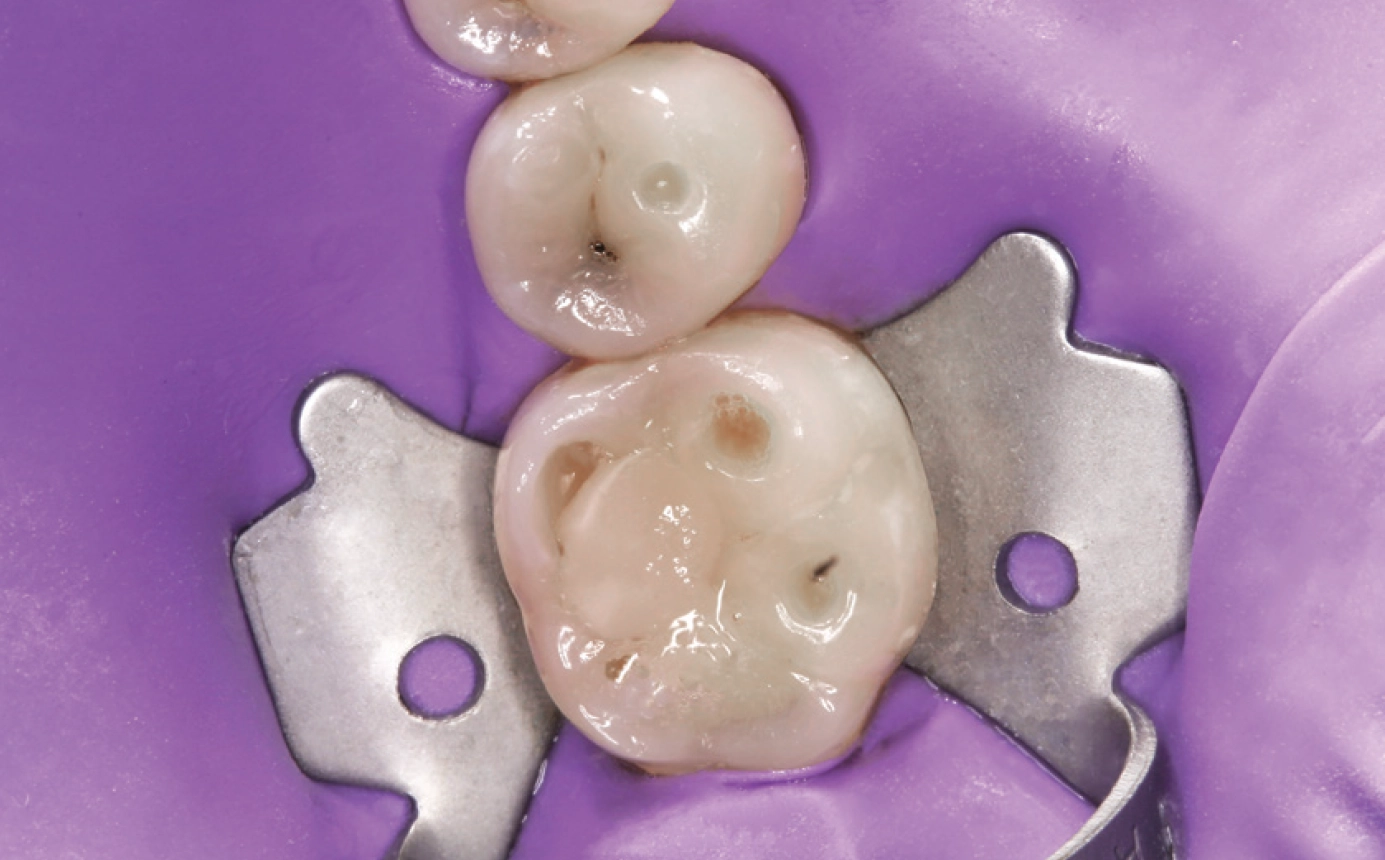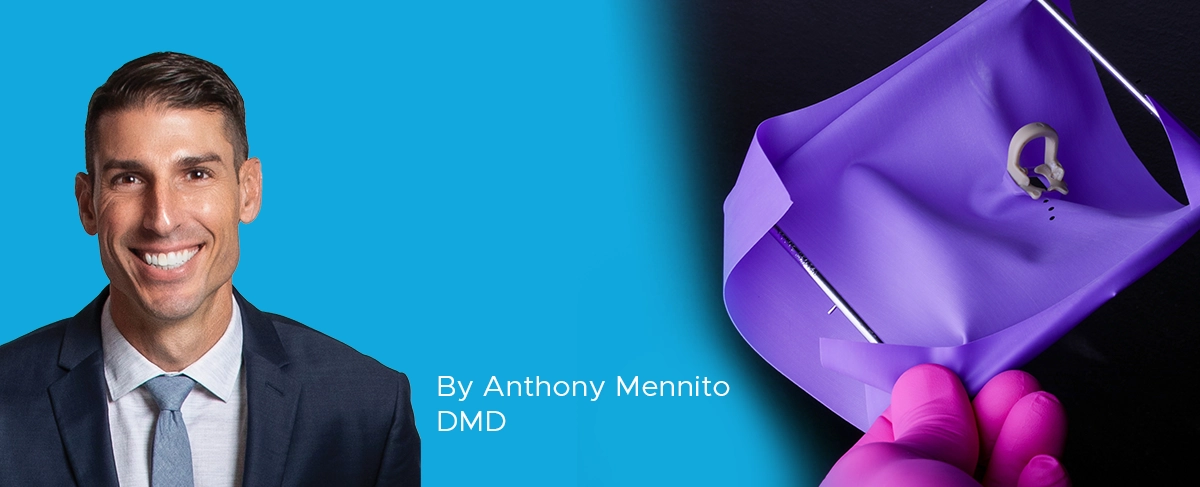
Closer Look: True™ Dental Dams Stand Out From the Crowd
By Nate Lawson, DDS, MA, PhD
Rubber dams provide isolation to prevent contamination of endodontic and restorative preparations and to protect the oral cavity and throat from materials and equipment used in dental procedures. They prevent the oral cavity and the working field from contaminating one another.
Rubber dams are a standard of care for endodontic procedures. Surprisingly, only 47% of 1490 US dentists who participated in a National Dental Practice-Based Research Network survey reported always using rubber dams during root canals. Rubber dams should be used for every root canal to prevent oral bacterial contamination of the root canal system and inadvertent dropping of files into the patient’s throat.
The use of rubber dam isolation for restorative procedures, on the other hand, may not be considered standard of care by all dental practitioners. Another National Dental Practice-Based Research Network study found that 63% of dentists never used rubber dams for restorative procedures. Additionally, only 12% of the 9890 restorations observed in the study were performed with rubber dams. Despite the relatively low use of rubber dams for restorative procedures in the US, they provide many clinical advantages.
“Using a rubber dam is an essential step when I am performing a direct adhesive restoration,” says Nate Lawson, DMD, MA, PhD, associate professor at UAB School of Dentistry in Birmingham, Alabama, and Division of Biomaterials director. “The main function of a rubber dam for me is to prevent saliva, blood, and crevicular fluid from entering my tooth preparation. Salivary contamination of my bonding agent significantly reduces the bond to dentin to nearly half of its maximum bond. Rubber dams can also retract tissue to allow better visualization of the tooth and protect the tissue from laceration from my bur. Finally, the rubber dam acts as a barrier to prevent my instruments or materials from entering my patient’s mouth.”
The True™ Dental Dam from Clinician’s Choice® is a type of rubber dam that provides benefits for both endodontic and restorative procedures. Its biggest advantage may be its good tear resistance.
“I think the No. 1 advantage of the material is that it’s a good balance between being flexible enough so that you can stretch it over the teeth and floss into contact,” says Dr. Lawson. “But it’s not too stretchy such that it can still retract tissues, especially the medium gauge.”
True Dental Dams come in blue latex and purple latex free options with an opaqueness that contrasts with the teeth, making for easier visuals. “Sometimes they make rubber dams that are too translucent so that you can kind of see through the rubber dam, which can be a little bit tricky if you stretch it,” says Dr. Lawson. “And it’s translucent and you don’t actually know if the rubber dam is covering up everything that you want it to.”
With the rubber dam’s different gauges, there are a variety of thicknesses that can be used. Medium gauge dams will be easier to stretch over and floss between teeth, providing the flexibility necessary for certain procedures and mouths. Thicker, heavy gauge True Dental Dams retract tissue better, pushing it out of the way during the procedure.
“The thing that makes the True Dental Dam different is its handling. It’s got a good tear resistance, it comes in different materials, latex and latex free, different gauges, and then it also comes in two different colors. It’s a little treat. You get to work with a material that’s just made well,” says Dr. Lawson. “It’s not a complicated thing, but it does make this process of using a rubber dam a little bit easier and more fun. It sounds weird to say more fun, but it’s more fun.”

ABOUT THE AUTHOR
Nate Lawson DMD, MA, PhD is the Director of the Division of Biomaterials at the University of Alabama at Birmingham School of Dentistry and the program director of the Biomaterials residency program. He graduated from UAB School of Dentistry in 2011 and obtained his PhD in Biomedical Engineering in 2012. His research interests are the mechanical, optical, and biologic properties of dental materials and clinical evaluation of new dental materials. He was the 2016 recipient of the Stanford New Investigator Award and the 2017 3M Innovative Research Fellowship both from the American Dental Association. He served on the American Dental Association Council of Scientific Affairs and is on the editorial board of The Journal of Adhesive Dentistry and Compendium. He has lectured nationally and internationally on the subject of dental materials. He also works as a general dentist in the UAB Faculty Practice.
Share This Article! Choose Your Platform
Products Mentioned in this article
Related Articles
Ask the Expert: An Interview with Nate Lawson, DMD, PhD on Universal Adhesives
By Nate Lawson, DMD, PhD
What is an universal adhesive? A “universal” adhesive is not a technical term but rather a clinical term. It implies that an adhesive can be used with or without phosphoric acid on dentin or enamel. In scientific writing, these adhesives are sometimes referred to as mild self-etch adhesives because they have a slightly less acidic pH (around 3) than typical self-etch materials (around 2).
A Stress-free Approach to Tooth Isolation
By Anthony Mennito, DMD
In my opinion, we are in a golden age of dentistry. The materials we have at our disposal are incredibly esthetic, increasingly durable, and can be placed with minimal to no removal of healthy tooth structure. So why are we so stressed out all the time?
Take 5: 5 Restorative Clinicians’ Take on True Dental Dam
5 Restorative Clinicians' Take On True Dental Dam.




